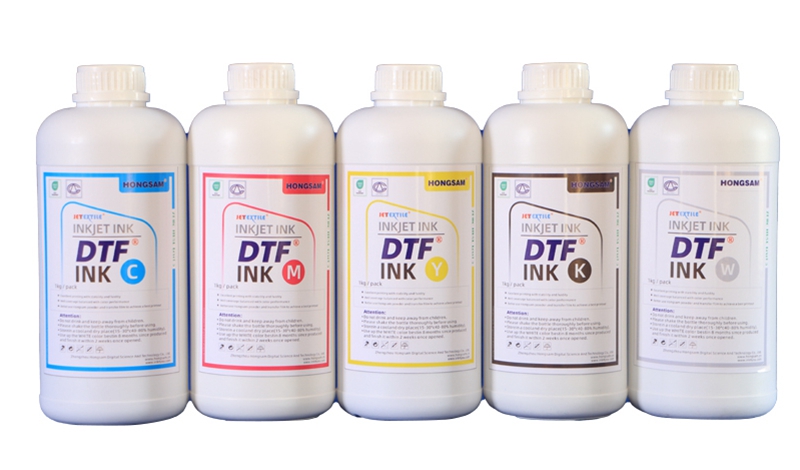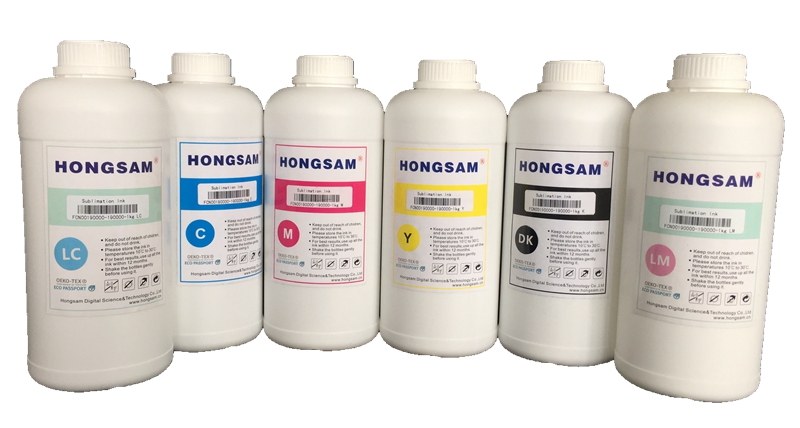
DTF Pigment Ink is also called film transfer ink, which is a very popular heat transfer solution on the market. There are also very mature sublimation inks for heat transfer on the market. What are the differences in the application of the two transfer inks? This article will analyze them in detail.
Different Ink Types
DTF ink belongs to pigment ink, and the colorant is the pigment. The pigment has no affinity for all coloring objects. It mainly combines with the coloring object relying on the resin, adhesive, etc. in the DTF printing ink.
Sublimation ink belongs to dye ink, and the colorant is disperse dye. The dye has affinity for textiles and can be adsorbed by fiber molecules to react and fix together. Therefore, thermal transfer ink does not need to add resin, and the stability of sublimation ink is relatively better than that of DTF ink.
Different Printing Media
DTF pigment ink, also known as film transfer ink, is currently used to print on a special PET film, and then transfer pattern to the fabric using the PET film as a medium. The principle is to fix the ink dots through the coating on the special PET film. Without a special coating, the pigment ink cannot be fixed on the PET film, and the picture will melt and cannot form a complete image.
As a very mature transfer solution on the market, sublimation ink uses thermal transfer paper as the printing medium. Sublimation paper is also divided into coated paper, lightly coated paper, and uncoated paper. Thermal transfer paper also has a special coating for absorbing thermal transfer ink, but the coating of thermal transfer paper is different from the PET film coating.

Different Coloring Process
The coloring process of
white DTF ink is 150 degrees Celsius for about 15 seconds, while the coloring process of sublimation ink is 200 degrees Celsius for about 30 seconds. This is because their colorants are different.
Different Media Adaptability
Based on the above-mentioned differences in color development process, we can clearly judge that the media adaptability of DTF printing ink is definitely wider than that of sublimation ink, especially on some media such as cotton cloth whose color development temperature cannot be too high.
The color development temperature of thermal transfer ink is 200 degrees Celsius. Under this temperature, many materials or fabrics will deform or turn yellow, while the color development temperature of DTF ink only needs to be 150 degrees Celsius, which will not damage medias.
What can be transferred by sublimation ink also can be transferred by DTF ink, but what can be transferred by DTF ink may not be transferred by thermal transfer ink. Direct To Film ink has a absolute advantage in media adaptability. This is one of the reasons why many people think that the prospects of DTF ink are very broad.
Conclusion
At present, the costs of the two solutions are different. The cost of DTF ink solution is obviously higher than that of the sublimation ink. In fact, there is no obvious conflict between the two solutions. The DTF ink solution is more suitable for digital printing of cotton cloth, with good fastness, color performance, and hand feeling. Sublimation ink solution is mainly for digital printing of polyester cloth.
 Feb 14,2025
Feb 14,2025

